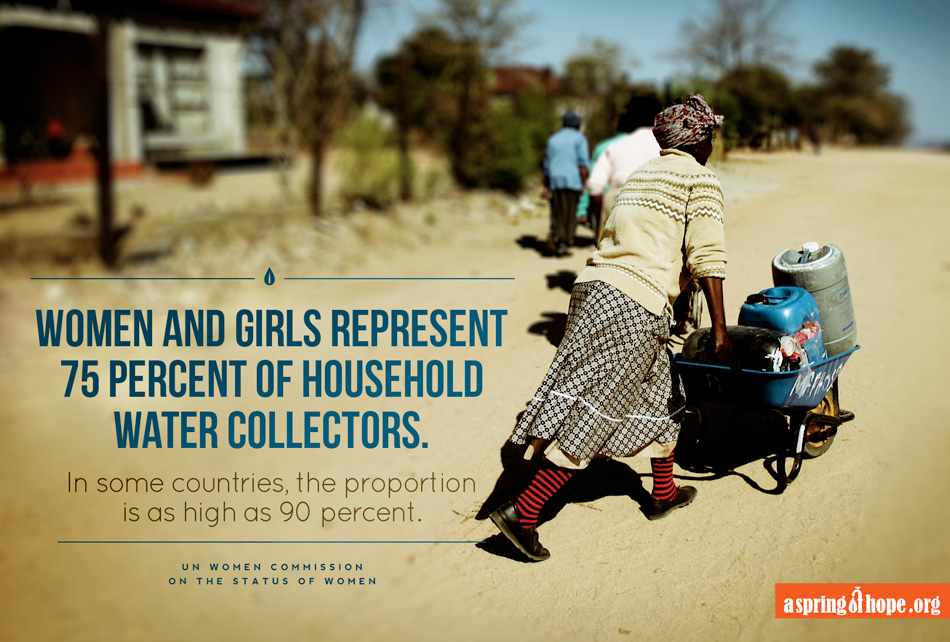WATER CRISIS IN AFRICA
1.4 million South African children
live in homes that have no safe water supply
UNICEF SOUTH AFRICA Universal Periodic Review
UNICEF SOUTH AFRICA Universal Periodic Review
Access to reliable water sources is one of the major problems in Africa. According to a 2006 WHO report, of an estimated 800 million people who live in Africa, 300 million live in a water stressed environment. The most immediately apparent impact of water scarcity in Africa is on the health of its population. As water is so essential for life, those living in water deprived regions are forced to rely on unsafe resources. This results in the spread of waterborne diseases, such as typhoid fever, cholera, dysentery and diarrhea. These widespread health problems then affect the productivity and development of African communities. Those who are affected are simply too sick and weak to contribute. To compound the problem, economic resources that could be allocated to agriculture or education are sapped by the cost of treating these waterborne diseases.
To further complicate the issue, there are limited sources of clean drinking water available in Africa. Surface water is often highly polluted, and infrastructure to pipe water from fresh, clean sources to arid regions is too costly. Groundwater is the best resource to provide clean water to the majority of areas in Africa, especially rural Africa, and groundwater has the benefit of being naturally protected from bacterial contamination as well as being a reliable source during droughts. However, accessing these sources is expensive and many communities do not have the means to drill a well, let alone install the necessary infrastructure.

Without safe water resources, the chances of breaking the cycle of poverty are slim, a difficulty with which African women are all too familiar. The burden of collecting water lies directly with women and girls, who are forced to spend nearly sixty percent of each day collecting water. They may have to walk several kilometers to water sources, with no guarantee it will even be available, once they stand in line for hours with their jerry cans waiting for their turn at the tap. The bulk of their time spent on water collection also results in a deficit in education for girls.
Access to adequate water and sanitation brings improved health outcomes, increased school attendance, and greater dignity and safety for women. One study found that reducing the distance to a water source from 30 to 15 minutes increased girls’ school attendance by 12%.
The problems that affect the larger continent of Africa, can also be seen in the country of South Africa. Though the Limpopo region has extensive commercial agriculture and ranching operations, as well as a thriving tourism industry driven by game reserves and Kruger National Park, many of the rural communities suffer from neglect and water scarcity.
While on vacation to South Africa in 2005, mother and daughter Joanne and Brittany Young witnessed the inequality and abject poverty for themselves when chance circumstances landed them at Beretta Primary School in Acornhoek, an impoverished town located in a former “Bantustan,” or apartheid-era “homeland.” Beretta had over 1,200 students and no running water.

The lack of nearby running water made life at Beretta extremely difficult. School gardens, which provided for many students their only source of fresh fruits and vegetables, grew exclusively during the rainy seasons. Volunteer mothers walked several miles to retrieve buckets of water from a government pump to prepare lunch for the children. Without operating flush toilets, students were forced to use unsanitary pits and were not able to wash their hands to keep from spreading illnesses.
Brittany and Joanne teamed up to raise funds for a borehole (deep water well) at Beretta Primary. In 2006, a well was completed the help of South African friends Brendon and Sheri Schmikl. Water at Beretta Primary significantly improved student health and nutrition through a thriving garden.
Since then, ASoH has drilled wells at 27 schools in South Africa. In addition to drilling wells, we have also developed, with the assistance of the dedicated principal of Beretta Primary, Leanette Sithole, a comprehensive permaculture program, in which all our partner schools participate. This program allows the schools to maximize the yield from their gardens and conserve the precious water supplied by their wells.

However, many challenges continue to present themselves. Sanitation remains a big issue. Many schools lack adequate toilets or kitchen facilities to prepare the food grown in their gardens. Our dedicated team is always searching for solutions. For instance, we are installing waterless toilets at some of the campuses and we maintain relationships with all our partner schools, allowing us to identify those which are struggling with garden cultivation or need repairs on their irrigation infrastructure and provide them the necessary ongoing support.
We are a small charity, but we are constantly seeking new ways to grow and extend our support community. We have developed partnerships with South African Airways, the Irie Foundation, the Rand Water Foundation, and House of Mandalea, among others. One of the advantages to being a small charity is that we have very low overhead and all funds donated are directed towards projects.
Visit the schools page to see case studies and locations of our partner schools.
Give now and help us continue to build wells in South Africa. A gift as little as $5 can supply water to a child for a whole year! Don’t forget to sign up for our newsletter. Just click on the buttons below!